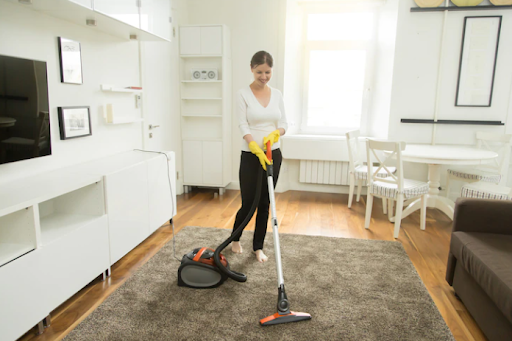A carpet cleaner, extractor, or carpet shampooer removes dirt and stains firmly buried in carpet cleaning Dallas. The following explains how the machines are used to achieve the best possible results: First, the operator pre-treats the carpet by spraying it with a cleaning solution and allowing it to soak in, also known as linger, for approximately fifteen minutes. The next step is for the operators to utilize the carpet cleaner, which injects water and cleaning solution into the carpet and then uses a powerful suction to remove the soiled fluid. While some models come with components that heat the rinse water, others do not have this capability.
Carpet cleaners are commonly referred to as "steam carpet cleaners," "carpet steam cleaners," or simply "steam cleaners." However, natural steam cleaners employ dry vapor steam, which is useless for cleaning carpets for general purposes.
Carpet cleaners in Dallas typically come in various configurations, allowing the user to clean with a powerful wand. Carpet cleaners pulled behind provide broader cleaning routes, allowing the user to clean with a powerful wand. Extreme Power's XPC-12000 is a professional-grade carpet cleaner. Attachments for use with carpet cleaners make it possible to clean soft surfaces such as upholstered furniture, wall partitions, and drapes.
Components Crucial to the Operation of a Carpet Cleaner
Pump:
This component creates the pressure that injects the water into the carpet. Thus it must function correctly. In most cases, the pressure levels on pumps fall below 60 to 500 pounds per square inch (psi).
Vacuum:
The unclean water and cleaning solution that is drawn out of the carpet by the vacuum of the carpet cleaner are deposited into an extraction tank once the vacuum is finished. Motors can be found in voids in various designs, including single 2-stage motors, two 3-stage motors, and three 2-stage motors. These combinations are used to drive the vacuum. Pick an engine with at least two stages if you want the best performance possible.
It is usual practice to quantify the power of a vacuum motor in terms of airflow (in cubic feet per minute, or CFM) and water lift (inches). The volume of air that passes through a machine is referred to as its airflow, and its CFM rating can typically range from 100 to more than 200. A water lift measures the vacuum's suction strength and can go anywhere from 100 to more than 250 inches on average.
Solution Tanks:
The water used for rinsing is stored in these tanks. Generally speaking, solution tanks' capacity can range from 4.5 to 17 gallons.
Tanks for Recovery:
The extracted dirt, various cleaning agents, and water are all stored in these tanks. Generally speaking, recovery tanks' capacity can range from 4.5 to 15 gallons.
Affecting Temperature:
In as little as three minutes, this component may bring the rinse water temperature to a maximum of 210 degrees Fahrenheit. One type of heating element is called a single tank-heating model, which heats the water in the solution tank. A different heating element is called a double inline heating element, which heats the water as it leaves the machine.
Accessories:
Carpet cleaners typically include a sizable wand for use on floors. The wand's breadth can range from ten to twelve inches, and it can have either one or two jets used for dispensing and removing fluids. Several choices are available, including upholstered furniture and stair wands. The hoses used with vacuum cleaners and cleaning solutions can be purchased in several different lengths, and bespoke sizes can also be ordered.

No comments:
Post a Comment